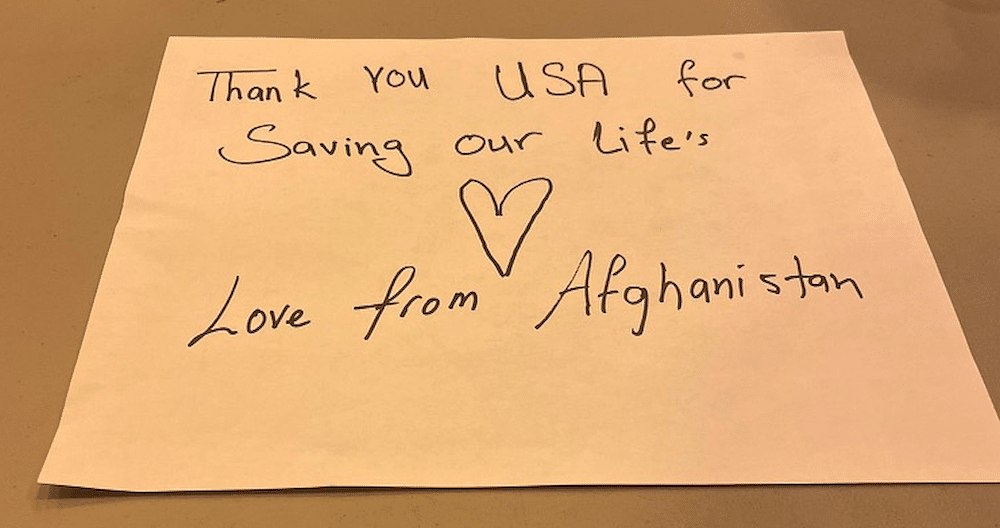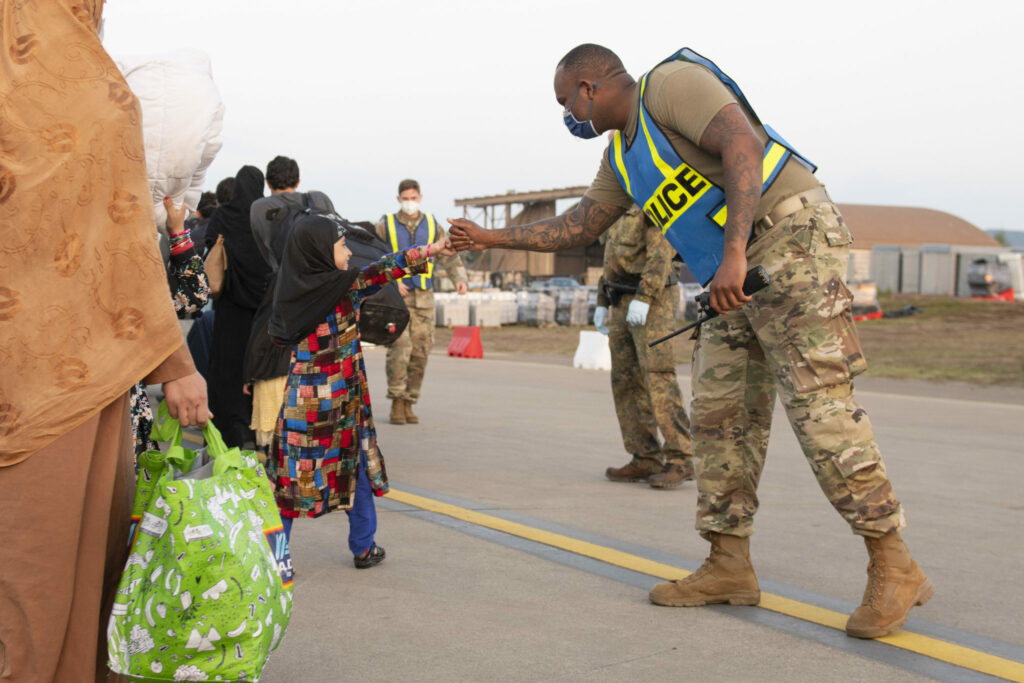Read the original article on Military.com. Follow Military.com on Twitter.
More than 9,000 Afghan refugees who had been living in temporary housing on military bases in the U.S. since the fall of Kabul in August have been resettled in local communities, many with the aid of a makeshift army of veterans groups, military family organizations and immigration agencies.
About 5,800 of the 9,000 Afghans were resettled away from the eight military “safe havens” nationwide with the support of the non-governmental groups, said a U.S. official speaking late Tuesday on the condition of anonymity to provide background on the situation.
Another 3,200 Afghans, mostly U.S. citizens, lawful permanent residents and Special Immigrant Visa holders who aided the American military in Afghanistan or who already had close ties in the U.S., also left the bases and did not need outside support, the official said.
The official noted that all of the 9,000 Afghans who left the bases went through security vetting by the Departments of Homeland Security and Defense, the FBI, the National Counterterrorism Center and other intelligence government agencies, and were required to receive COVID-19 and other vaccinations before being resettled.

Related: 8 ways that you can help Afghan refugees
However, the total population of Afghan refugees on military bases remains at about 55,000. That’s because U.S. Transportation Command earlier this month resumed flights to the U.S. for refugees held at transit points in the Middle East and Europe from among the estimated 124,000 evacuated from Afghanistan during the chaotic U.S. withdrawal, the official said.
Housing the refugees on military bases began at Fort Lee, Virginia, and since has expanded to Fort McCoy, Wisconsin; Fort Bliss, Texas; Joint Base McGuire-Dix-Lakehurst, New Jersey; Fort Pickett and Marine Corps Base Quantico, Virginia; Holloman Air Force Base, New Mexico; and Camp Atterbury, Indiana.
The enormous task of resettling the refugees and giving them continued support as they integrate into local communities has been driven by the sense of obligation, particularly among veterans who served in Afghanistan, to the Afghans who supported the U.S. and its allies through 20 years of war.
A survey, called Pulse Check: Supporting Afghanistan Allies, conducted by Blue Star Families from Sept. 3 to Sept. 7 showed that about 78% of veterans who served in Afghanistan agreed that the U.S. has a duty to help those fleeing the Taliban; 46% of the veterans who shared that belief had already taken action in some form to assist.

Related: Former SOCOM, CENTCOM commander wants no one left behind in Afghanistan
On Sept. 14, a nonprofit called Welcome.US was formed to coordinate with the government and fund the efforts of veterans groups; immigration agencies such as Lutheran Immigration and Refugee Service; state and local governments; and business organizations ranging from the U.S. Chamber of Commerce to vacation rental company Airbnb.
Former Presidents Barack Obama, George W. Bush and Bill Clinton — along with former first ladies Michelle Obama, Laura Bush and Hillary Clinton — agreed to serve as honorary co-chairs for Welcome.US.
In a statement of support for the nonprofit, retired Army Gen. Stanley McChrystal, former commander of U.S. and NATO forces in Afghanistan, said, “It should be no surprise that our veterans and their families have been among the first to step up to welcome and support the Afghan people as they build their lives here in America.”

Related: Exclusive: Spec Ops Vets on why we must save Afghan Interpreters
In an interview last week, John Bridgeland, co-chair of Welcome.US and former director of the White House Domestic Policy Council in the Bush administration, said the group’s mission is to provide “a single point of entry for Americans to find ways to donate to the frontline organizations helping with the resettlement, to open their homes through organizations like Airbnb. Thousands of Americans are doing that, and thousands more could do it.”
He said about $6 million has already been raised for emergency grants to community-based organizations to meet local needs as the Afghans begin resettlement.
The resettlement effort also could aid in restoring a sense of purpose for Americans outraged by the confusion and chaos of the withdrawal, during which 13 U.S. service members and hundreds of Afghans were killed in a suicide bombing at the Kabul airport and 10 Afghan civilians were killed in a misguided U.S. retaliatory drone strike, Bridgeland said.
“At a time of national division, this is a moment where the country could have something concrete to work on that would help restore a greater sense of unity,” he said. “It’s just encouraging to see the country come together, and we’re just helping to channel the surge in compassion to the place where it’s needed most.”

To date, 25 veterans service organizations and groups have joined up with Welcome.US, including Blue Star Families, Team Rubicon, the Independence Fund, Iraq and Afghanistan Veterans of America, the Tragedy Assistance Program for Survivors, and the Wounded Warrior Project.
Air Force Gen. Glen VanHerck, head of U.S. Northern Command, said on a Sept. 27 visit to Fort McCoy that there is no timetable for the transition of Afghan refugees off the military bases.
“Our top priority remains providing a safe and secure environment for our guests, and the personnel supporting the mission, to enable the completion of the Afghan evacuees’ immigration process in order to transition into their new lives in the United States,” he said.
Read more from Sandboxx News:
- Iran and Russia poised to fill America’s void in Afghanistan
- Former SEAL and CIA officer on what comes next for US, post-Afghanistan
- ‘First Casualty:’ A Gripping account of the CIA in Afghanistan after 9/11
- The Panjshir Railroad: A covert action blueprint to continue evacuations from Afghanistan
- Former Navy SEAL explains how civilians are evacuated from places like Afghanistan
Feature image: U.S. Air Force photo by Senior Airman Jennifer Zima




